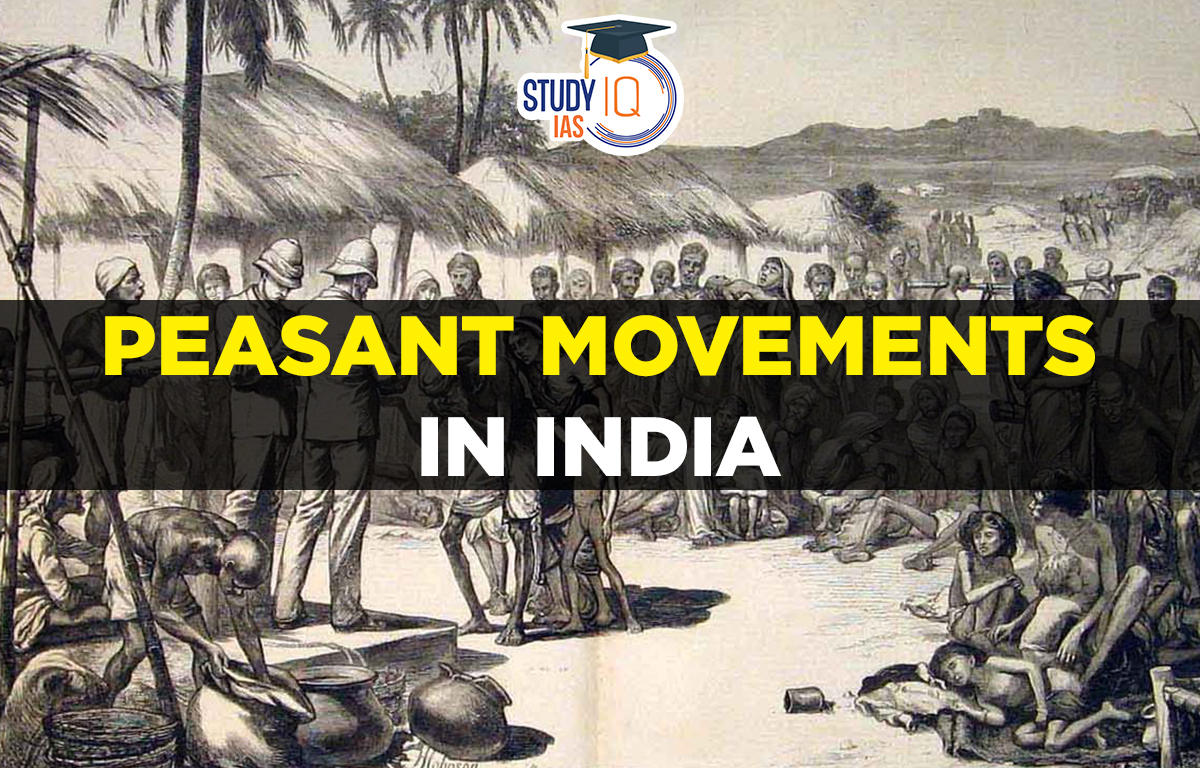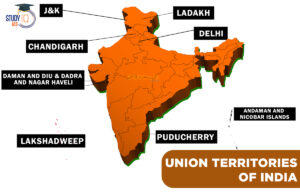Table of Contents
Peasant Movements in India
During the British Colonial Period in the 18th and 19th centuries, peasant movements were a component of societal movements against British atrocities. These movements only existed to bring back previous systems of government and societal interactions. These movements have a long history and are closely related to the numerous peasant uprisings that have occurred throughout human history in different regions of the world.
In feudal and semi-feudal societies, early peasant movements in India frequently resulted in disastrous uprisings. This article will cover the Peasants Movements (1857–1947), which is useful for preparing for the UPSC exam.
Read More: Faraizi Movement
Peasant Movements in India History
The colonial economic policies that altered the agrarian structure, the destruction of handicrafts that caused overcrowding of the land, the new land tax system, and the colonial administrative and judicial systems were all major contributors to the impoverishment of the Indian peasants. In zamindari regions, peasants had to deal with high rents, unlawful taxes, arbitrary evictions, and unpaid labour. Heavy property taxes were imposed by the government in Ryotwari areas.
The overburdened farmer frequently went to the neighborhood moneylender out of fear of losing his only source of income. The latter took full advantage of the former’s problems by demanding high interest rates on the money loaned. The farmer was frequently compelled to mortgage his property and livestock. Sometimes, the moneylender would seize the things that were mortgaged. Over a significant area, real farmers were progressively demoted to the status of tenants-at-will, sharecroppers, and laborers who did not own any land.
Often, peasants resisted being exploited, and they quickly realized that the colonial state was their real foe. In some instances, desperate peasants used crime as a means of escaping unpleasant circumstances. Among these offences were burglary, dacoity, and societal banditry.
Read More: Aligarh Movement
Peasant Movements in India Evolution
The Peasant Movements in India were among the social movements against British crimes during the British Colonial Period in the 18th and 19th centuries. The restoration of the prior political and social structures was the sole objective of these movements. Significant factors in the destitution of the Indian peasants included colonial economic policies that changed the agricultural structure, the destruction of handicrafts that led to land overpopulation, the new land revenue system, and colonial administrative and judicial systems.
Peasants in the areas that adopted the zamindari system had to contend with exorbitant rents, illegal taxes, arbitrary evictions, and poorly compensated labour, which sparked the development of the peasant movement in India. High land taxes were levied by the government in the areas of the Ryotwari system. The overburdened farmer frequently sought financial assistance from the local moneylender out of concern for losing his sole source of income. The latter required exorbitant interest rates on the loans of money.
The farmer was compelled to pledge his assets and animals as collateral. The things that were mortgaged could occasionally be seized by the lender. Real farmers were demoted to tenants-at-will, sharecroppers, and landless labourers over a sizable region.
Read More: Reform Movement in North India
List of Peasant Movements in India
Several peasant movements developed in India during the colonial period as a result of economic policies carried out by various British colonial governments that led to the decline of the traditional handcraft industries. The table below provides a List of peasant movements in India:
| Peasant Movement | Period |
| Rangpur Dhing | 1783 |
| Narkelberia Uprising | 1782 – 1831 |
| Indigo Revolt | 1859 – 1860 |
| The Pagal Panthis | 1825 |
| Kol Rebellion | 1832 |
| Telangana Movement | 1946 – 1952 |
| Deccan Uprising | 1875 |
| Munda Rebellion (Ulgulan) | 1899 – 1900 |
| Santhal Rebellion |
1855 |
| Mappila Rebellion in Malabar | 1841 – 1920 |
| Tebhaga Movement | 1946 – 1947 |
| Bardoli Satyagraha | 1926 |
Read More: Ahmadiyya Movement
Peasant Movements in India Causes
- The confiscation of peasants’ properties
- The amount of ground rent that peasants had to pay increased.
- Cruel actions carried out by debtors
- The economic policies of the British government exploited the peasants while defending landowners and moneylenders. The peasants frequently rose up in rebellion against this injustice.
- Crafts made by farmers in the past were lost.
- Another reason for the peasant movement was the Zamindari era’s prohibition on peasant property ownership.
- When the British economic strategy destroyed traditional handicrafts and other small businesses, rural land became overburdened, ownership changed, and the peasantry became highly indebted and destitute.
- The peasants in Zamindari areas endured high rents, illegal taxes, arbitrary evictions, and underpaid labour. The government levied heavy property taxes.
Read More: Kuka Movement
Peasant Movement in India Impact
Although these uprisings had no aim of overthrowing British rule in India, they did increase public awareness. In both court and out of court, peasants began to fight for their legal rights as they became more aware of them. Peasants, who engaged in direct combat to achieve their goals, rose to prominence in agricultural uprisings. Several Kisan Sabhas were formed during the Non-Cooperation Movement to coordinate and advocate for peasant concerns.
These organisations helped restructure the agrarian movement in India by reducing the landed class’s power. To combat exploitation and tyranny, peasants needed to unite. These peasant insurrections cleared the way for a number of other upheavals across the country.
The peasants constantly fought for their goals, so their voices were heard. In the Deccan riots, Pabna movement, Indigo revolt, and Bardoli Satyagraha, peasant requests were satisfied. The nonviolent outlook provided the revolution’s peasants a great deal of power. The farmer movement also contributed to the rise of nationalism.
Read More: Poligars Revolt
Peasant Movement in India UPSC
The Peasant Movement was able to unite the entire peasantry, including landless labourers, in its anti-feudal and anti-imperialist crusade because the peasantry lacks distinction and the anti-imperialist battle is all-encompassing. The movement’s peasants had a lot of power because of the nonviolent ideology. Nationalism also grew as a result of the movement. In order to effectively pass the upcoming UPSC exam, candidates the UPSC must study and understand this important topic.
Read More: Bhil Revolt


 Union Territories of India with Capital ...
Union Territories of India with Capital ...
 Rowlatt Act 1919, Meaning, Provisions, R...
Rowlatt Act 1919, Meaning, Provisions, R...
 Jallianwala Bagh Massacre, Date, History...
Jallianwala Bagh Massacre, Date, History...

















